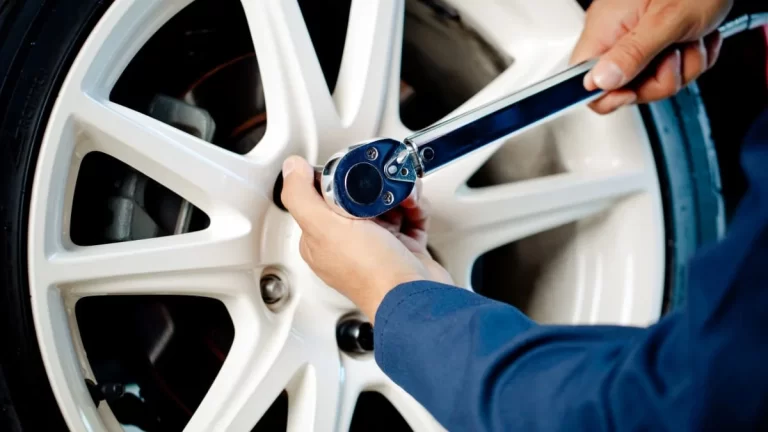Whether you’re reading about V8 pickups or electric sedans, the concept of torque is critical to understanding the capabilities of a car. Torque often takes a back seat to horsepower when it comes to performance metrics, but it can tell you a lot about how a car will feel in the real world. So what is it and why does it matter? Let’s dive in.
Torque
Simply put, torque is a measurement of force being used to rotate something. Whenever you turn a knob or screwdriver, you’re applying torque. Your typical physics teacher will probably demonstrate the concept with some sort of simple lever, but this is Autoblog, not West Crestfield Senior High, so we’re going to stick with vehicular examples. The best way to easily visualize torque is not with engine components, but with something slightly more car-adjacent: a lug wrench.
Torque is a measurement of an amount of force being applied over a given distance. That’s why automotive engine torque is expressed in pound-feet; you’re applying a force (in pounds) over a distance (in feet). That’s the exact same thing you’re doing when you stick a box wrench on a nut and crank it. The wrench doesn’t make you any stronger; it just multiplies the work you were already doing.
Read more: Why do so many cars have 2.0-liter turbo engines? A closer look
Let’s say you get a flat tire. Your emergency kit consists of a (properly inflated) spare tire, a jack and a lug wrench with a 12-inch handle. You line up the jack at the proper point and you’re ready to loosen those lug nuts before you put the wheel in the air, but when you stick the lug wrench on and give it a good, assertive yank, nothing happens. Uh-oh. Not enough torque.
Since we know what torque is, maybe we can work out a solution. There are only two components to this fancy math problem: force and distance. If we make one bigger, we’ll get more torque. That means we either need somebody stronger to yank on the wrench, or we need one with a longer handle.
Since you’re still not speaking to Dwayne Johnson (He knows what he did), your best option is a bigger wrench. But unless you conveniently ran over that machine screw in an auto parts store parking lot, chances are you won’t be able to make that happen. But if you’re lucky, maybe you have a length of pipe you can slip over the wrench handle to make it longer. Since your wrench handle is a foot long, the math here is easy: a two-foot pipe will give you twice the torque. Three feet? Three times. Et cetera, et cetera.
Horsepower
Now that you understand torque, understanding the difference between it and horsepower is much easier. Torque is that’s a very simple “can it be done?” formula. You need to move something that requires X force and you have Y foot-pounds to apply. If Y is greater than or equal to X, you can move it. Problem solved. Simple math.
Horsepower is math too, albeit slightly more complicated. That’s because horsepower cares about the rate at which you accomplish work, not just whether you can accomplish it. If torque is the answer to “can it be done?” then horsepower is the answer to “how fast can you do it?”
Read more: How do today’s new vehicles match their EPA MPG ratings?
To calculate horsepower, you multiply torque (in pound-feet) by speed (in RPM, in the case of a car) and divide the total by 5,252. Why 5,252? Because it’s a mathematical constant, as in “why are you constantly asking us questions we don’t feel like answering?”
Let’s revisit our flat tire scenario. What happens if you don’t have something to make the wrench handle longer? You may be able to find other ways to apply force to the end of the handle. Like, by hitting it with a hammer, for instance.
Like the wrench, the hammer itself doesn’t actually make you stronger, but it allows you to more efficiently apply momentary force on the end of the wrench handle. But one hit may not be enough. You may have to hit it again and again and again to work the nut loose enough that you can use the wrench to finish the job.
Read more: Most powerful SUVs in America for 2022
Your hammer strategy didn’t apply as much torque as you would have by using a longer wrench, so it took a little longer. The rate at which you accomplished the work decreased, but you eventually got it done. This is the same basic premise behind a handheld impact gun. You’re delivering quick, powerful bursts of torque over and over again to incrementally apply leverage.
If you had a large enough impact gun, you could use it to turn the crankshaft on your car and move it down the road, but even a hypothetical monster impact gun isn’t going to be able to move a many-thousand-pound car very quickly. It has the torque to get it going, in other words, but it lacks the horsepower to make that happen quickly.
Fundamentally, this is how an internal combustion engine works, only you have multiple wrenches (your connecting rods) applying torque to your nut (the crankshaft) thousands of times per minute. And to take that analogy further, the crankshaft in turn (sorry) becomes a giant wrench that you’re using to turn your flywheel.
The flywheel is where an engine’s torque output is measured. Every part of your powertrain downstream of the crankshaft is just another wrench turning yet another component, and using this analogy, your transmission is basically a box of differently sized wrenches, allowing you to choose the best one for the job you’re trying to perform — hence the advantages of modern 10-speed automatics.
So which is better?
There’s a saying in racing: to finish first, you must first finish. Torque is the “can it be done?” figure, so it stands to reason that it’s the most critical measurement of an engine’s potential. But if you’re in a race — whether wheel-to-wheel or against the clock — “how quickly?” is an incredibly relevant question. Neither torque nor horsepower tells the whole story. Look no further than the Jeep Wrangler Rubicon 392 for a perfect illustration of the fact that there are numerous factors at play, such as tire choice, aerodynamics, suspension design, and (arguably most critically) gearing. But that’s a topic for another time.
Related video:










